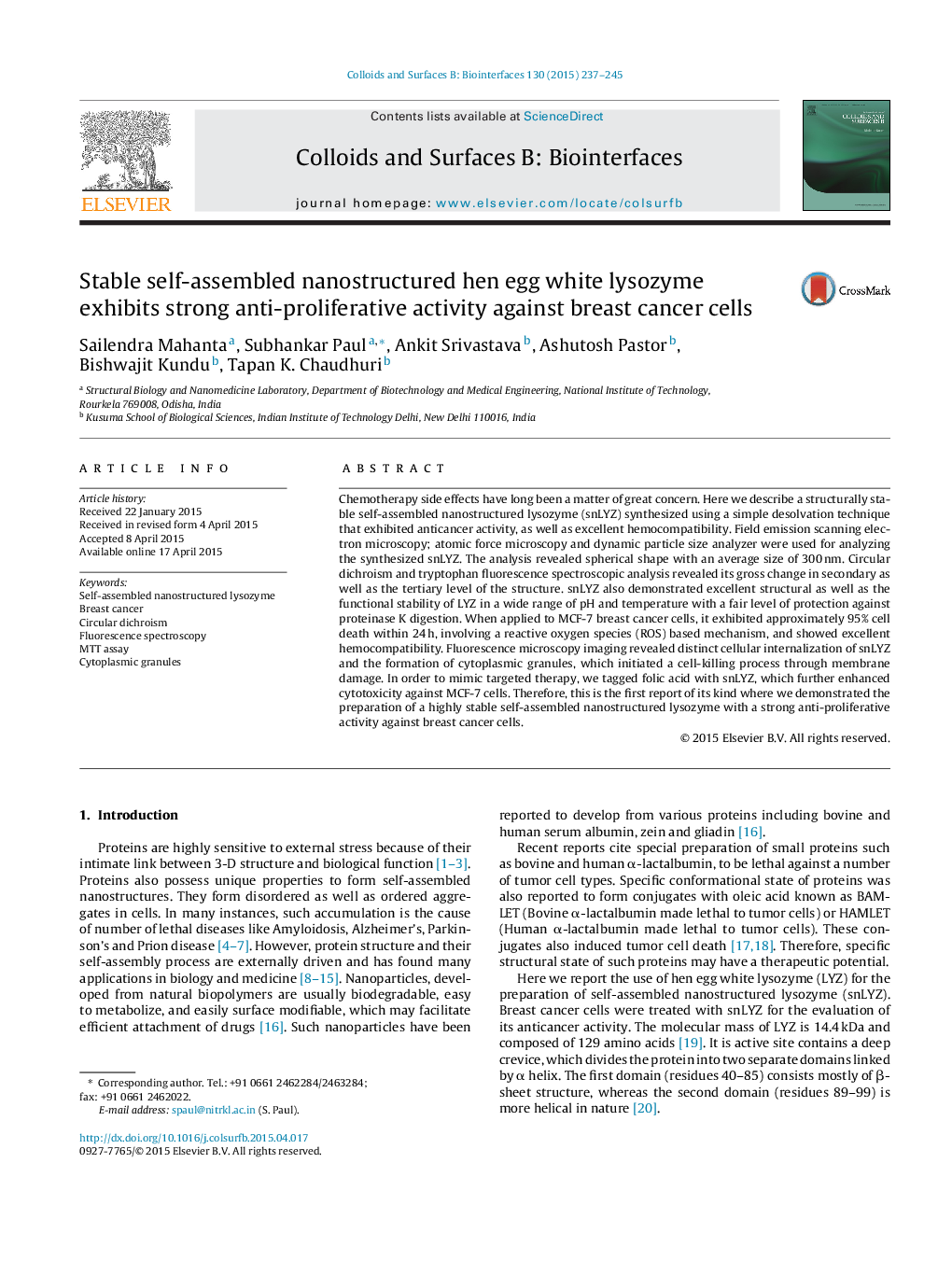| Article ID | Journal | Published Year | Pages | File Type |
|---|---|---|---|---|
| 599341 | Colloids and Surfaces B: Biointerfaces | 2015 | 9 Pages |
•Protein-based self-assembled nanoparticle was developed for breast cancer therapy.•Nanoparticles were of 300 nm average size, spherical shape and highly stable.•Nanostructures exhibited dose dependent toxicity in breast cancer MCF-7 cells.•Internalization of nanostructures in cells triggers the breast cancer cell death.•Such nano-assembled structures were also found highly hemocompatible.
Chemotherapy side effects have long been a matter of great concern. Here we describe a structurally stable self-assembled nanostructured lysozyme (snLYZ) synthesized using a simple desolvation technique that exhibited anticancer activity, as well as excellent hemocompatibility. Field emission scanning electron microscopy; atomic force microscopy and dynamic particle size analyzer were used for analyzing the synthesized snLYZ. The analysis revealed spherical shape with an average size of 300 nm. Circular dichroism and tryptophan fluorescence spectroscopic analysis revealed its gross change in secondary as well as the tertiary level of the structure. snLYZ also demonstrated excellent structural as well as the functional stability of LYZ in a wide range of pH and temperature with a fair level of protection against proteinase K digestion. When applied to MCF-7 breast cancer cells, it exhibited approximately 95% cell death within 24 h, involving a reactive oxygen species (ROS) based mechanism, and showed excellent hemocompatibility. Fluorescence microscopy imaging revealed distinct cellular internalization of snLYZ and the formation of cytoplasmic granules, which initiated a cell-killing process through membrane damage. In order to mimic targeted therapy, we tagged folic acid with snLYZ, which further enhanced cytotoxicity against MCF-7 cells. Therefore, this is the first report of its kind where we demonstrated the preparation of a highly stable self-assembled nanostructured lysozyme with a strong anti-proliferative activity against breast cancer cells.
Graphical abstractFigure optionsDownload full-size imageDownload as PowerPoint slide
